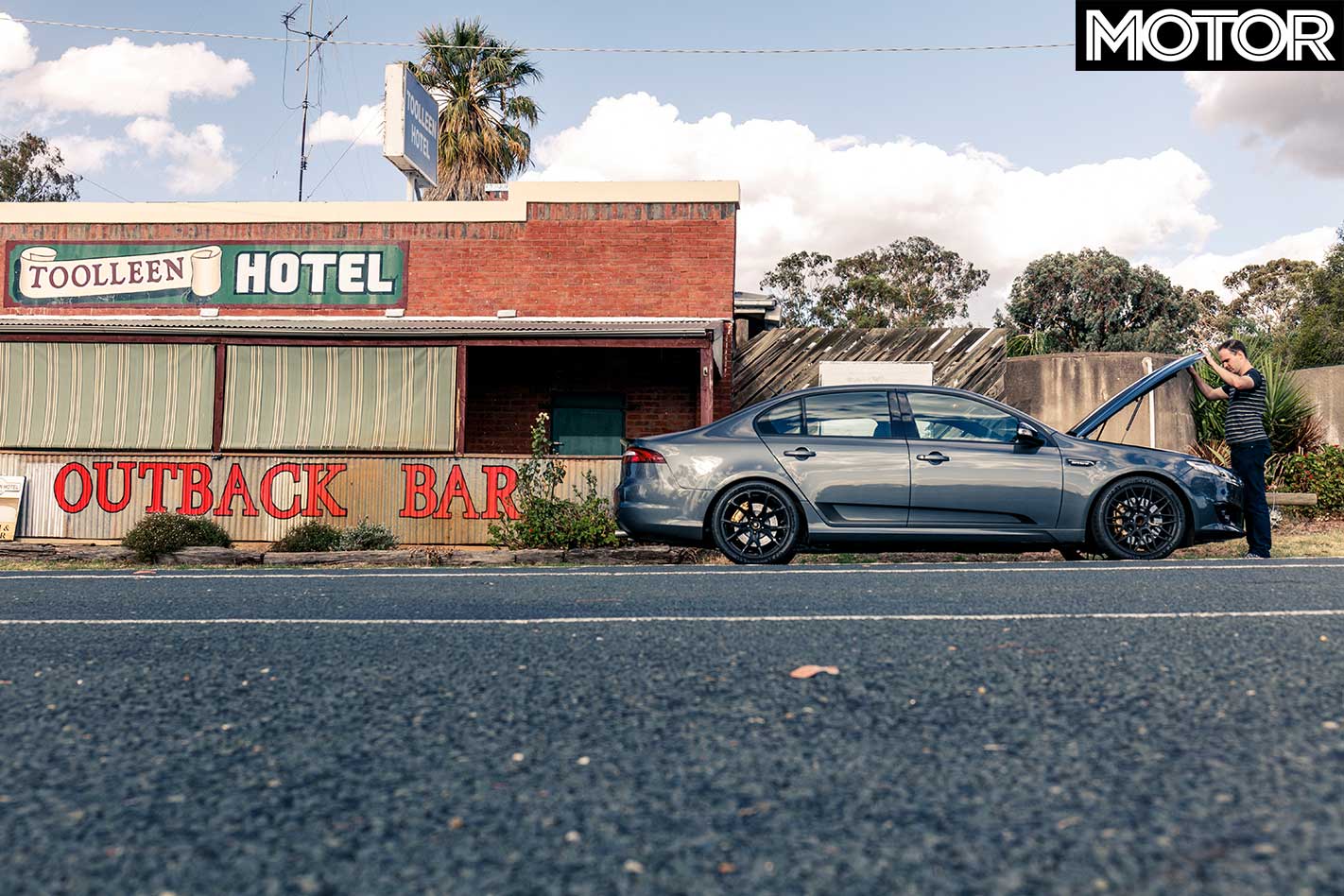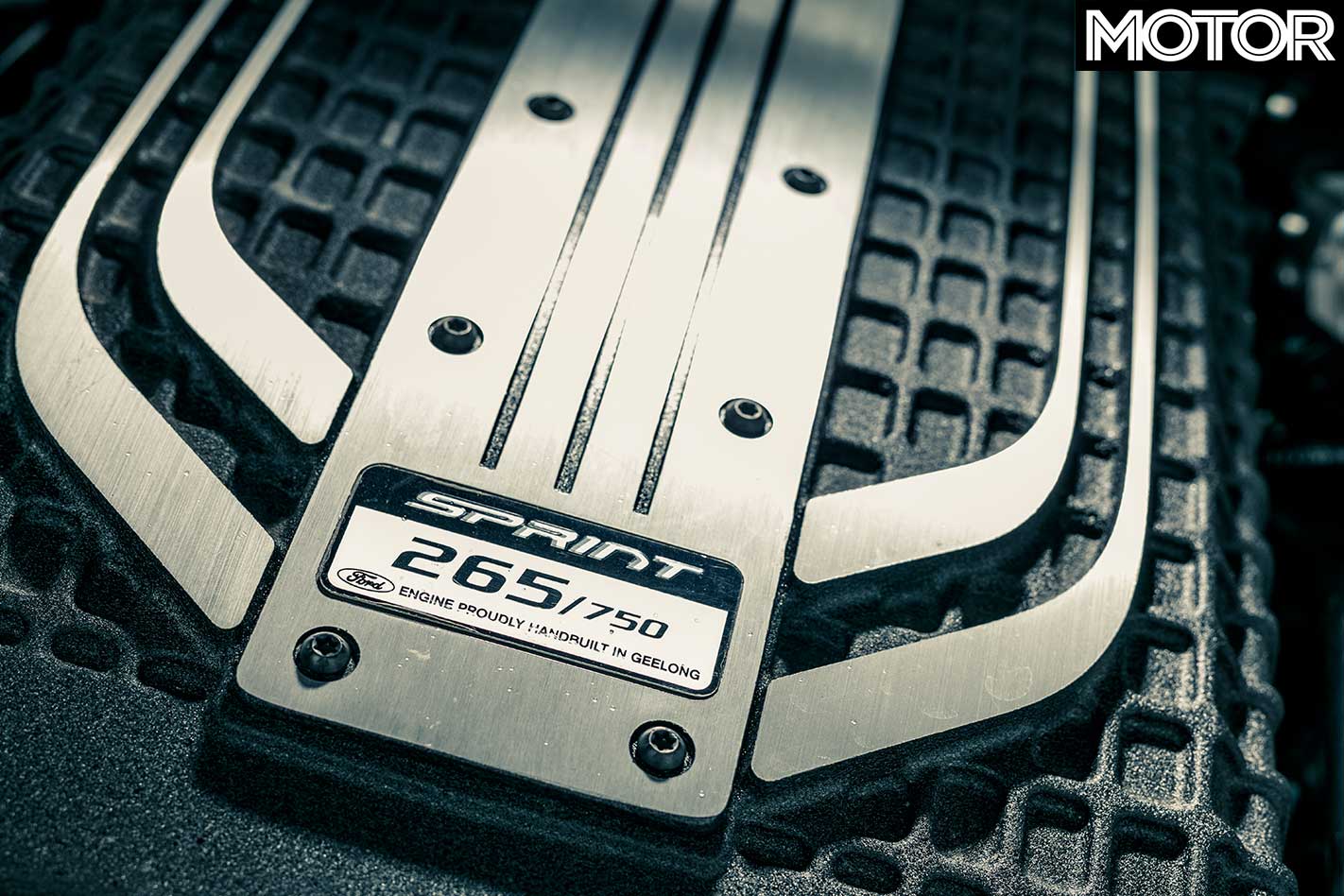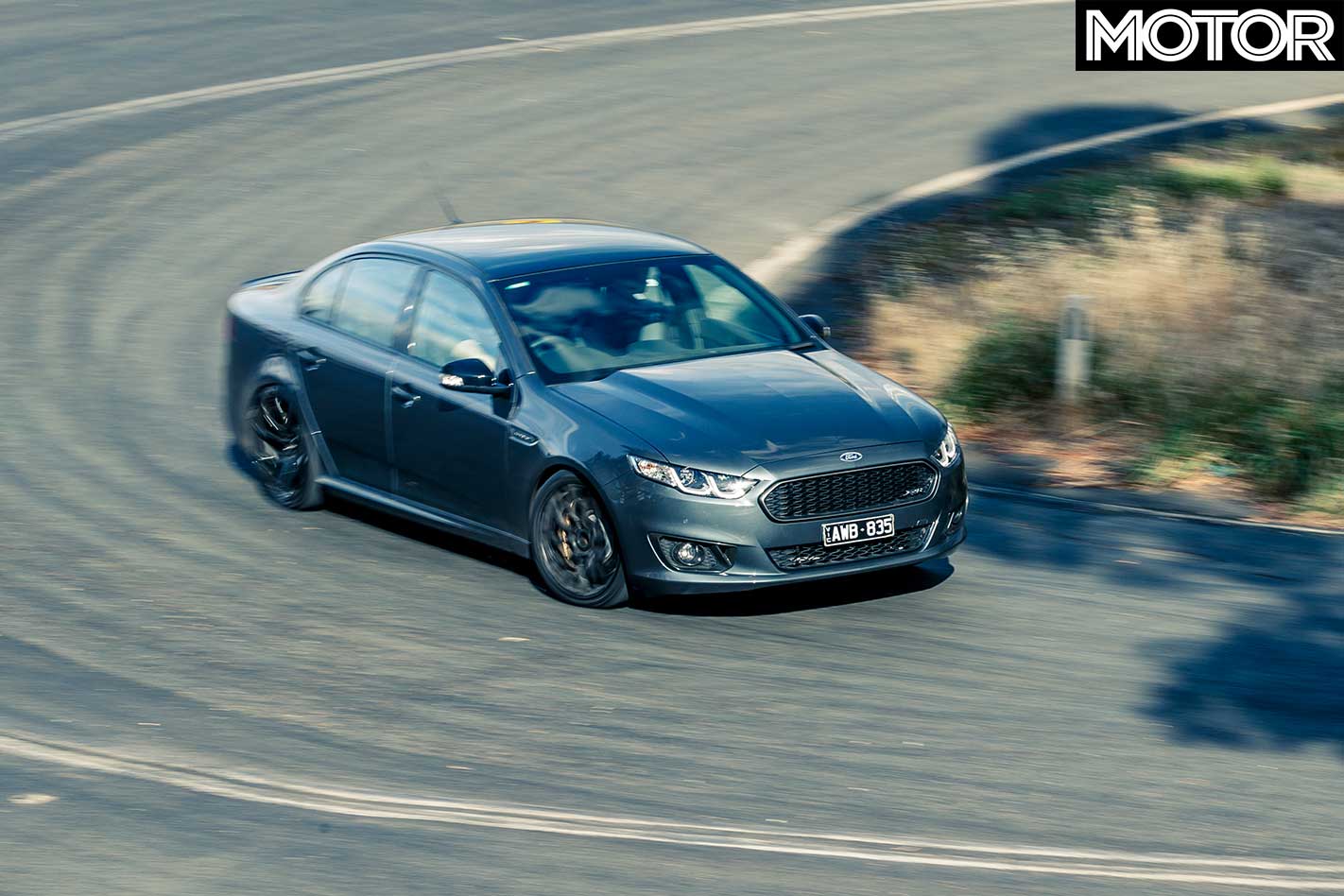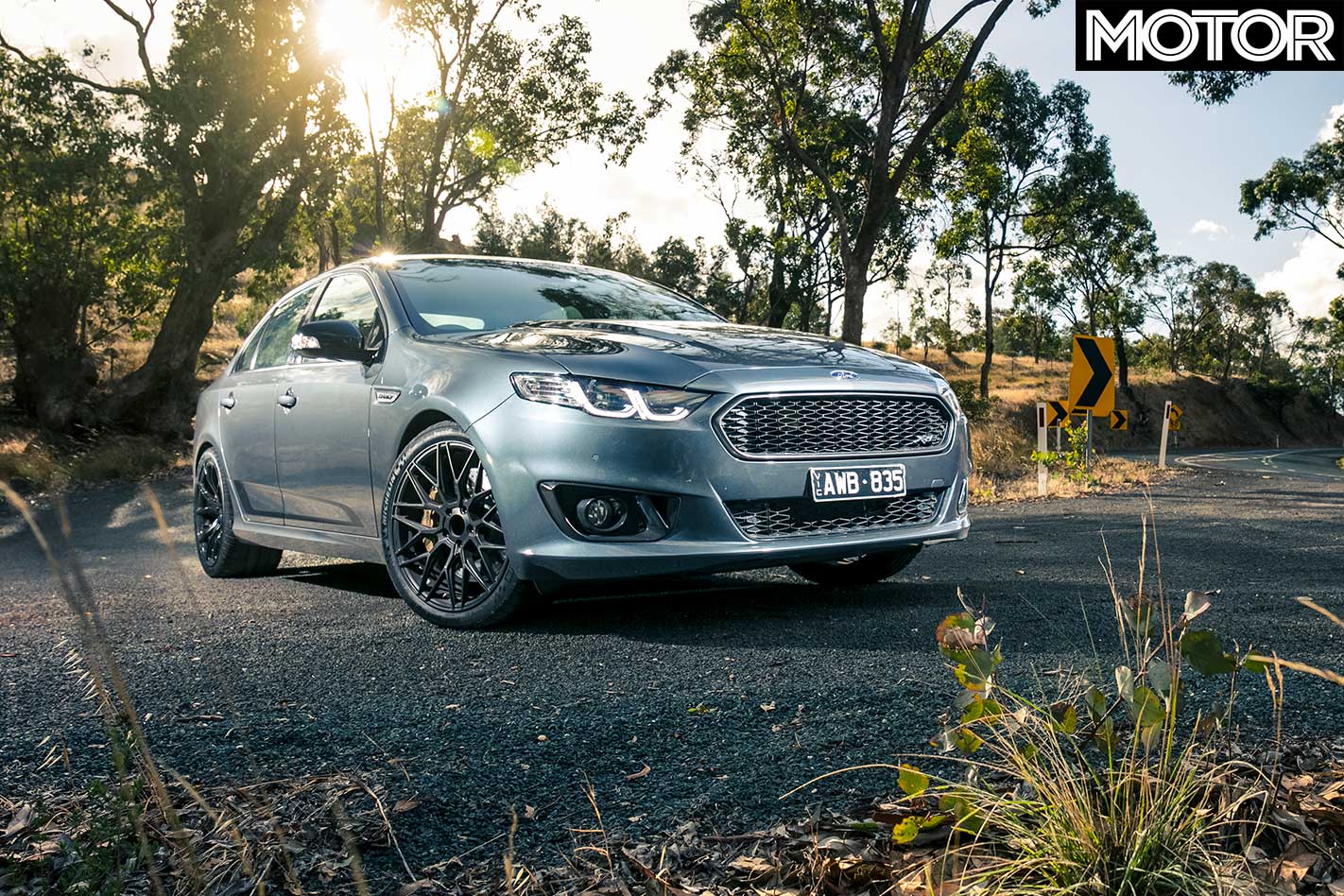The game of automotive ‘what ifs?’ is a fascinating one. What if Old Man Enzo had gone through with the sale of Ferrari to Ford? What if the discovery of Texan crude oil hadn’t killed the electric car? What if Ayrton Senna had lifted slightly on that fateful lap at Imola? Such questions make for fascinating pub banter but rarely lead to any real conclusions.
Thanks to Victorian engineering specialists Premcar, one of the greatest Aussie automotive questions has now been answered: what if Ford had built a modern-day GT-HO? Who, I hear you ask? Premcar sprang into existence following a management buyout of Prodrive Engineering in 2012.

Prodrive, you may remember, was responsible for a lot of the engineering work on the Ford Performance Vehicles range and had a controlling 51 per cent stake until it sold up.
Simply put, many of the folks Ford tasked with making its fast Falcons have together developed their ultimate version, freed from corporate constraints but using many of the same suppliers. Meet the Falcon Holy Grail.
In essence, the Holy Grail package fulfils the potential of the 5.0-litre supercharged V8, dubbed Miami, developed by Prodrive for the FG Mk II FPV range and subsequently installed in the FG X XR8. It consists of a new cast aluminium intake manifold, a triple-pass water-to-air intercooler, new power steering and coolant pumps, front-mounted air-to-water heat exchanger and unique engine calibration to make it all work.
Intercooling is the key that unlocks the Miami’s power vault. While not exactly a wallflower in standard form, producing up to 345kW/575Nm or 400kW/650Nm on overboost, the ability to control combustion temperatures renders transient overboost redundant and allows the Holy Grail to pump out a whopping 483kW at 6800rpm and 753Nm from 4500-5200rpm.

Where peak power is produced should raise the eyebrows of Falcon aficionados, for while the standard Miami is limited to 6250rpm, the Holy Grail revs to 7000rpm, hence the need for a new power steering pump.
All up the engine costs $24,885, or $24,388 if you pay upfront. On paper, it’s a lot of money for “a manifold, intercooler and tune” as one commenter put it. However, the cost isn’t in the parts themselves, but the development and certification. “There’s a significant investment in the car, in time, tooling and material costs to get to that specification,” explains Premcar’s Engineering Director, Bernie Quinn.
“We’ve done all the ADR approval, so it’s completely certified, every part of the car. We’ve remade manifolds. We haven’t drilled holes in manifolds, we’ve re-tooled that whole intake manifold; that means making new casting tools and then machining the manifold.” The package is subjected to OEM levels of durability testing, including hot and cold climate evaluation, full power dyno runs, deep thermal shock and shaker rig vibration testing.

Initial impressions from behind the wheel are a little underwhelming. It feels, well, pretty much identical to an XR8 Sprint, albeit with a much juicier note and burbles and gurgles on the overrun courtesy of the optional performance exhaust ($4500). But that’s also the point.
Peaks and troughs in the torque curve, coughs or hesitations in the power delivery, would not be acceptable in a product pertaining to be OEM standard. As such, the Holy Grail’s manners are impeccable.
Still, a quick squirt through first and second doesn’t reveal much, either. Because Premcar has retained the factory driveline protection, torque is limited in first gear and up to around 3000rpm or so the HG isn’t developing much more grunt than a standard Miami.

Venture beyond this and the beast gradually awakens. Look at the HG dyno graph (helpfully displayed under the bonnet of every example) and you’ll notice that power continues to build right to the 7000rpm cut-out. It thrives on revs, the acceleration increasing with every 500rpm increment. The factory shift buzzer chimes at 6000rpm, but ignore that – and the feeling of guilt that comes with sending an engine 1000rpm beyond redline – and the Holy Grail relentlessly piles on pace.
In our test car, Premcar’s hardworking prototype, the thrust is punctuated by gearshifts courtesy of the six-speed manual gearbox. Manual Falcons have always been some of the hardest cars to performance test and boosting one to almost 650hp certainly doesn’t make it any easier.
Thankfully, Premcar is also offering a comprehensive upgrade of the Falcon chassis, including unique Shockworks coilovers and new rear trailing blades, which allow the fitment of 19.0 by 10.5-inch wheels wearing 295/30 Michelin Pilot Sport Cup 2 tyres, the front-end supported by 19.0 by 8.5s and 255/35s.

The combination of so much grunt and a freshly washed dragstrip (Heathcote was underwater when we first arrived) makes power-down a struggle, but the new suspension and grippy track-spec rubber at least gives the Holy Grail a prayer.
Run after run it comes agonisingly close to hooking up, but the traction difficulties are evident in our best 0-100km/h figure of 4.98sec. Wheelspin and axle tramp, though lessened compared to standard courtesy of uprated bushes, continues all the way through second. Even setting the adjustable coilovers to full soft can’t tame it, the HG requiring steering correction at 120km/h. Once into third, though, it hauls like it’s trying to outrun its own supercharger scream.
The best quarter mile we ever recorded in an XR8 Sprint was 13.05sec at 185.48km/h, whereas the Holy Grail manages 12.72sec at a storming 192.95km/h. Despite the compromised launch, this super Falcon is more than 0.3sec quicker to 200km/h than the quickest time we ever recorded in a HSV Gen-F GTS, while our best GTSR W1 figure of 12.18sec at 195.68km/h suggests there’s little between the two in outright acceleration.

What’s most impressive is that the HG’s intercooling makes heat soak a thing of the past. Despite completing more runs down the strip than I’ll care to admit chasing elusive tenths, the trap speed remains utterly consistent.
On the road the HG’s party trick is the feeling of an elastic band being slowly pulled as you floor the throttle in a higher gear; the longer you stick with it the more energy builds up, though it’s a game that would’ve been a lot more fun with the open speed limits of 1971, when Mel Nichols completed his famous Phase III run down the Hume, covering 3.8km every minute.
It might surprise you to learn the Holy Grail is little faster, but only because it’s electronically limited to 235km/h; by the time the mighty HO has reached 150km/h, the HG is knocking on 200km/h.

As mentioned, the Holy Grail package technically consists of just the engine upgrades, but Premcar has pushed the Falcon chassis forward just as far as the powertrain. The goal was to retain as much of the Falcon’s long-distance touring capability as possible while sharpening its responses and improving its dynamics.
“The main aim was to make the best touring Falcon that’s been produced,” explains Principal Chassis Engineer Andrew Lynch. “You can drive it every day, handle every corner on spirited driving roads with ease and make it still capable to take to the track.”
“We could put rose joints everywhere and make it into something approaching a sports car in terms of precision, but it would be so compromised,” adds Quinn. “GT-HO stands for Grand Tourer Handling Option, or High Output, depending on who you talk to. And that’s what it is. That’s why we’ve got such a range in the dampers, to make sure soft is really soft and hard is really hard.”

The dampers have 12 settings, adjusted by rotating a knob at the top (front) or base (rear) of the shock. Once you know which way to turn them (the rears have to be adjusted by feel not sight) it takes only a few moments to alter the ride and handling characteristics. Premcar recommends around four or five (one being soft and 12 hard) for everyday driving and, unsurprisingly, this feels correct, providing an impressive blend of comfort and cornering capacity.
On full soft the ride isn’t appreciably better, but the extra body movement is noticeable, the handling feeling closer to a regular XR8. Setting the dampers to eight introduces a GT R-Spec-like jitteriness to the ride; we’d save the stiffer settings for smooth road blasts or track work.

According to Lynch, his first port of call was installing the sexy billet aluminium curved trailing blades to accommodate the 10.5-inch wide rear wheels and selecting Michelin Pilot Sport Cup 2 tyres, measuring 10mm wider than an XR8 Sprint/GT F/R-Spec at the front and 20mm at the rear. More commonly found on the likes of the Porsche 911 GT3 RS or Ferrari 488 Pista, the trick rubber makes this the grippiest and most confidence-inspiring Falcon we’ve driven.
The steering remains the weak link, giving only a vague suggestion of what the front wheels are up to rather than intimate feedback, but commit to a corner and you can be sure the Holy Grail will stick to your intended line almost regardless of road imperfections.

I want to set expectations. As a best-case scenario the FG X platform dates back to 2008 and regardless of how good the bits thrown at it are, it was never designed to handle almost 500kW. As Quinn himself says “it’s never going to be a 911 GT3”. But while you still need to probe rather than attack the limit, those familiar with traditional Falcon dynamics – the good and the bad – will surely be impressed by the Holy Grail’s added control and composure.
To answer the obvious question, on dry roads traction is excellent and it’s not a terror in the wet, either. Of course a car with this much power will oversteer, but you really have to want it to misbehave for it to do so.

Not everyone will ‘get’ the Holy Grail. Premcar knows this, which is why it’s only intending to sell 100 kits. There are undoubtedly cheaper ways to extract this level of performance from a Falcon and those who want an intimidating, tyre-tearing missile will be nonplussed. However, the sort of people who rushed to a Ford dealer, deposit in hand, in response to any GT-HO rumour are unlikely to be disappointed.
The Holy Grail package is expensive – all up it’s $44,175 – but regulatory compliance costs a lot of money. Look at it another way: if Ford’s final official Falcon had been a 483kW/753Nm GT-HO for $100,000, would anyone have batted an eyelid? As the brains behind the project, Quinn sums it up best: “In the context of releasing the ultimate Falcon, we said ‘well, given everything we’ve learned over the years, what would we do?’ This is it.”

FAST FACTS 2019 Premcar Holy Grail BODY: 4-door, 5-seat sedan DRIVE: rear-wheel ENGINE: 4951cc V8, DOHC, 32v, supercharged BORE/STROKE: 92.2 x 92.7mm COMPRESSION: 9.3:1 POWER: 483kW @ 6800rpm TORQUE: 753Nm @ 4500-5200rpm WEIGHT: 1872kg POWER-TO-WEIGHT: 258kW/tonne TRANSMISSION: 6-speed manual SUSPENSION: A-arms, coil springs, anti-roll bar (f); multi-links, coil springs, anti-roll bar (r) L/W/h: 4950/1868/1493mm WHEELBASE: 2838mm STEERING: hydraulically assisted rack-and-pinion BRAKES: 355mm ventilated/drilled discs, 6-piston calipers (f); 330mm ventilated/drilled discs, 4-piston calipers (r) WHEELS: 19.0 x 8.5-inch (f); 19.0 x 10.5-inch (r) TYRES: Michelin Pilot Sport Cup 2, 255/35 R19 (f); 295/30 R19 (r) PRICE: $44,175 (complete package); $24,885 (engine)
PROS: Takes Falcon performance to a whole new level CONS: But can’t change the steering or interior RATING: 4 out of 5 stars
The Strip

| Premcar Holy Grail | |
| 0-10km/h | 0.44sec |
| 0-20km/h | 0.89sec |
| 0-30km/h | 1.30sec |
| 0-40km/h | 1.72sec |
| 0-50km/h | 2.14sec |
| 0-60km/h | 2.62sec |
| 0-70km/h | 3.42sec |
| 0-80km/h | 3.95sec |
| 0-90km/h | 4.49sec |
| 0-100km/h | 4.98sec |
| 0-110km/h | 5.49sec |
| 0-120km/h | 6.30sec |
| 0-130km/h | 6.99sec |
| 0-140km/h | 7.70sec |
| 0-150km/h | 8.45sec |
| 0-160km/h | 9.23sec |
| 0-170km/h | 10.30sec |
| 0-180km/h | 11.32sec |
| 0-190km/h | 12.38sec |
| 0-200km/h | 13.53sec |
| 0-400m | 12.72sec @ 192.95km/h |
| 80-120km/h (3rd-6th) | 3.0/4.1/7.1/11.2sec |
| 100-0km/h | 35.20m |
| Speed in gears | |
| 1st | 78km/h @ 7000rpm |
| 2nd | 131km/h @ 7000rpm |
| 3rd | 179km/h @ 7000rpm |
| 4th | 233km/h @ 7000rpm |
| 5th | 235km/h @ 5000rpm* |
| 6th | 235km/h @ 3870rpm* |
Heathcote Dragway, 19˚C, dry. Driver: Scott Newman *Manufacturer’s claim
Why no reborn HO?

Given such enormous power potential was engineered into the Miami engine from the outset, why didn’t Ford ever build an FG GT-HO? The closest it got was the GT Black Concept of 2011, which featured wider rear rubber and intercooler ducts in the front bumper, but became nothing more than a styling exercise in production guise.
Essentially, following the $40m Miami development for FG Mk II, the outlook for Falcon didn’t support the chassis investment required for it to handle 500kW, as any changes would’ve been subject to Ford’s arduous durability testing regime.
In addition, tricks like the gear-specific boost maps installed in the final XR8 Sprint weren’t yet common, casting questions over drivetrain longevity.






